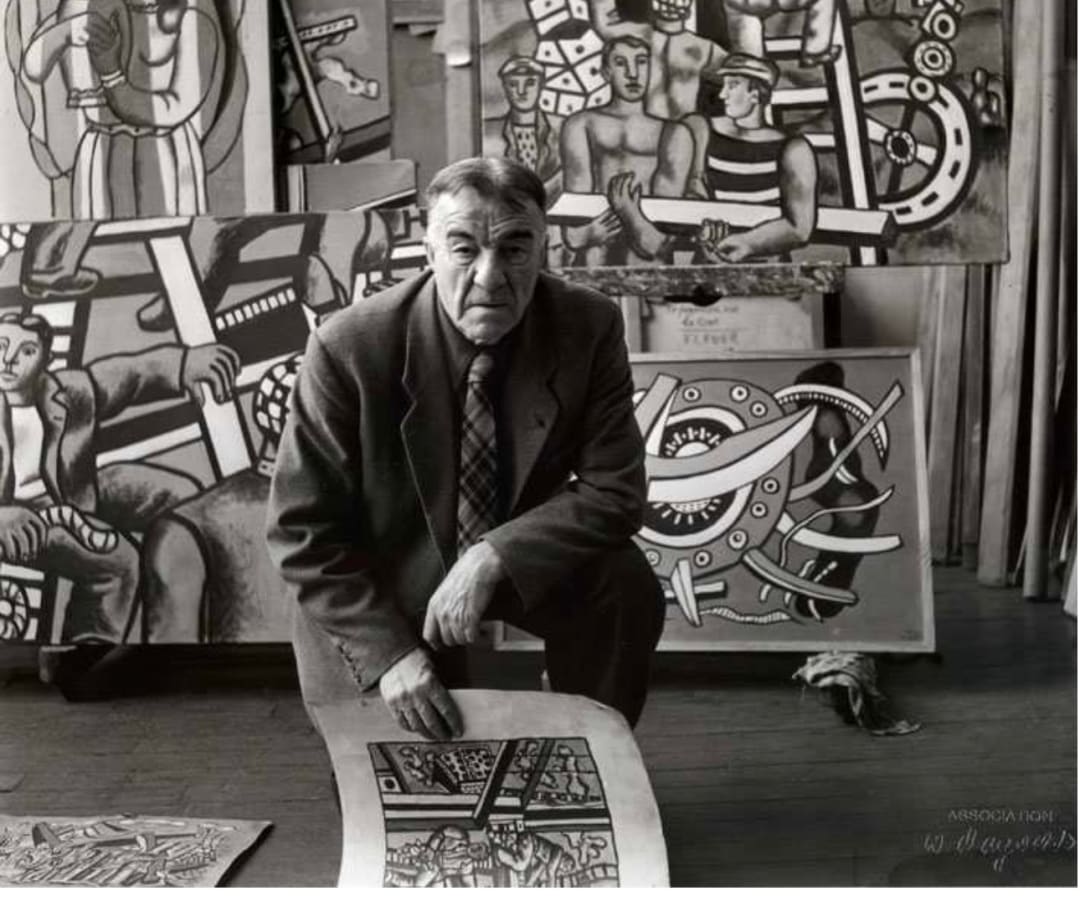Fernand Léger (1881-1955) was a French painter, sculptor, and filmmaker who played a significant role in the development of modern art. Often associated with Cubism, Léger’s work evolved into a unique style that fused abstraction and realism, emphasizing bold forms and vibrant colors. Born in Argentan, Normandy, Léger moved to Paris in 1900, where he was exposed to avant-garde art movements and developed a distinctive artistic language rooted in geometric precision.
Initially influenced by Impressionism, Léger’s direction shifted dramatically after encountering the work of Cézanne and the emerging Cubist movement. Alongside contemporaries like Pablo Picasso and Georges Braque, Léger helped shape Cubism, but he quickly branched out to develop what he called "Tubism," characterized by cylindrical and machine-like forms. His works from this period, such as The City (1919), celebrated the dynamism and mechanical energy of modern urban life.
World War I profoundly impacted Léger’s perspective, infusing his art with themes of industrialization and technology, portrayed as both powerful and poetic. His paintings like Mechanical Elements (1924) and The Constructors (1950) reflect his belief in art’s ability to represent the working class and industrial progress, using simplified forms and bold contrasts to evoke movement and vitality.
Beyond painting, Léger explored film and murals, contributing to projects like Ballet Mécanique (1924), a groundbreaking avant-garde film. He also taught at Yale University, influencing a generation of artists. Celebrated for integrating the aesthetic of machinery and human figures, Léger’s work laid foundational elements for later modernist movements and secured his place as a pioneer bridging Cubism and modern design.
